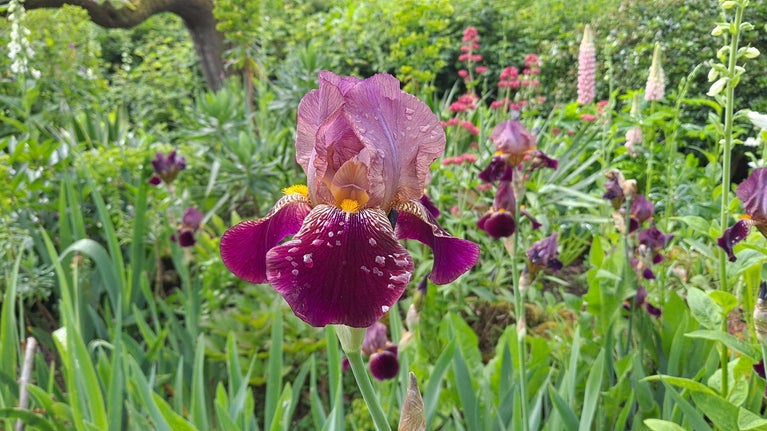
Donate to Munstead Wood
Please consider making a donation today, to support our work at Gertrude Jekyll's Munstead Wood, where gardening changed for ever.

Gertrude Jekyll's signature style of garden-making is still very clear to see at Munstead Wood. The remaining 11 acres of gardens, contain a spell-binding mix of original planting and features, plus meticulous re-creation at the highly skilled hands of a series of committed Head Gardeners, including the most recent, Annabel Watts. Discover what remains of the place that changed gardening for ever.
It is good to live and all the more good to live in a garden
The remaining 11 acres of Munstead Wood still include many important elements of Jekyll’s design for her garden and are a mixture of original features and planting schemes. Combined with very careful re-creation and some restoration by the previous owners, the Jekyll signature style is still very clear to see.
Munstead Wood plainly shows the importance of seasonality to Jekyll. Her garden is never at its best at one single time, but the delight is spread over the year as different areas come into bloom. First to waken are the hellebores, followed by rivers of daffodils and perky primroses before the zest of spring colour takes hold. Then the Three Corner Garden displays her soft and billowy peonies, poppies and lupins, before the chords strike-up for the midsummer melody of clematis and climbing roses cascading through the trees.
The crescendo of colour, harmony and contrast is the main summer border of cool blues and whites moving to vibrant reds, oranges and yellows. The display is cleverly woven from annuals, biennials, bulbs and herbaceous planning. The final lullaby comes in the form of the nodding heads and lavender tones of the late autumn daisy border which signals the time for rest.
Jekyll’s choice of plants was influenced by the various phases and travels of her life. She included shrubs and plants which had been features of her childhood home in Bramley, a nearby village to Munstead Wood. These included Amelanchier, Kalmia, Andromeda, Leycesteria.
Jekyll also collected many British plants from the wild and her local heathland, and hardy garden plants from nearby cottage gardens, constantly comparing and selecting the best through trials, patience and experimentation. Her love of the local Surrey landscape, of sandstone outcrops, heathland and hollow wooded lanes, inspired her development of water, woodland and dry wall types of planting schemes.
Extensive travel in her young adulthood also inspired Jekyll to use many of the Mediterranean and exotic plants she encountered on her trips to add scent, texture, and silver foliage to Munstead Wood. These include bay, myrtle, rosemary, santolina and Iris stylosa. Exotics such as cannas, euphorbias, and yuccas also held special memories and were chosen because they thrived particularly well in the poor sandy soil at Munstead Wood.
Jekyll chose plants as much for their shape, texture and habit as for scent or colour. Her aim was to elongate each season and give structure year-round for some part of the garden and this clearly set her apart from many of her contemporary horticulturalists.
As a trained artist, Jekyll applied her study of colour theory and used plants as a painter would a palette of paints, with bold strokes or drifts of colour in a border, moving from cool whites and blues to intense green, followed by hotter colours in the centre. Her painter's eye also looked to soften formal structures with gentle informal planting and an impressionist style creating gardens as 'beautiful pictures'.
The Michaelmas daisies are so important in September and October that it is worthwhile to give them a separate place

The garden year at Munstead starts with stately rows of pink and white hellebores which sit proudly under the trees along the Nut Walk. Jekyll planted two double rows of hazels in a zig-zag fashion on either side of the path leading to the Pergola and beds of kalmias. The trees create a shady arbour to ready the eye for the colourful delights of the spring bulbs in the Spring Garden beyond.
A revision in the last century saw the replacement of part of the walk with a swimming pool and we are keen to restore this area in full. As this part of the garden moves beyond the summer to early autumn, michaelmas daisy borders take their turn in the spotlight and form a stunning display of bouncing asters in hues of white, lilac, pink and purple on parallel borders gracing the pathway.
At the end of the Michaelmas daisy borders is the Pergola, which runs at right angles to them and provides a shady recess before encountering the summer flower borders. Pergolas were a typical feature of Arts and Crafts gardens and were recommended by Jekyll to many of her clients. Shade was important in a garden, and pergolas offered a place for climbing plants to grow. Adjacent to this is the kalmia beds.
It must have been at about seven years of age, that I first learnt to know and love a primrose copse.

The next area to come into bloom is the Primrose Garden, which is tucked away to the side of the North Court and is one of several areas of the garden which Jekyll created to allow a single plant species to show off its beauty. The garden has three flower beds, brimming with Jekyll’s Munstead Bunch primroses, that she bred over many years by carefully selecting the best colours. The flowers were available for sale from her nursery.
This garden looks splendid when in flower in March and April but for the rest of the year, it takes a step back from the limelight. Almost completely lost and overgrown by the 1980s, it was relegated to the laundry with a rotary drier for the use of the house. When time came to restore and recreate the beds in the 1990s, a number of Munstead Bunch primroses were found growing around the edges. These few plants have been cultivated and replanted, restoring the Primrose Garden to its original, pale yellow, beauty.
The Spring Garden is filled chiefly with drifts of tulips, crown imperials, wallflowers, arabis and daffodils, with a backdrop of morello cherries trained against the stone walls. Jekyll chose to allow Clematis Montana to ramble through the hazel trees and white rambling roses trained up through hollies. This part of the garden is one of the most well-documented, due to Jekyll's writing and her book Colour in the Flower Garden, in particular.
The Three Corner Garden is named for its triangular shape. Starting with peonies, about six weeks after the Spring Garden has shared its beauty, this garden offers up irises, euphorbias, lupins, and roses with Rosa Gallica reaching up the double stone wall. There is also a rock wall which runs along the edge of the Spring Garden and the Three Corner Garden, separating it from what was the nursery, stables and kitchen garden beyond. These areas are now privately owned.
The inspiration for Lutyens' Cenotaph, this curiously named part of the garden, is a simple garden seat with a birch tree behind, created between Lutyens’ formal tank pond and the Pergola. The birch tree already existed on the site and Jekyll must have planned the layout around it, using it as a terminal point to a hedged path. Jekyll asked Lutyens to design her a seat for this position and he came up with a bench with a seat shaped from a large block of elm with a masonry support.
The story goes that one of Jekyll’s friends, who worked at the British Museum, commented that the tomb-like bench set against the sombre yew and ethereal yellow verbascums, reminded him of the Cenotaph of Sigismunda, a character in a medieval Italian story.
This was apparently where Lutyens first heard the term ‘cenotaph’, meaning an empty tomb, and when he was asked to create a memorial following the First World War, Lloyd George asked him to design a catafalque, a platform for a coffin. Lutyens replied that what was required was a cenotaph – an empty tomb – and that’s what he created in Whitehall and is where we still commemorate on Remembrance Sunday.
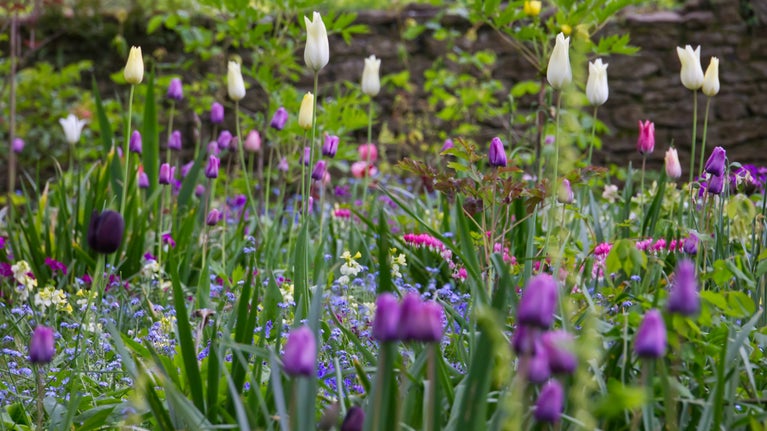
This is an exceptionally significant part of the garden and the Green Wood Walk vista, leading into the woodland, was the chosen view for the siting of Miss Jekyll’s bedroom, on the south side of the house. This area features cistus, heathers, winter flowering daphnes, rivers of daffodils and spring bulbs, with holly, pinus and silver birch trees, seasonally swathed in white climbing roses and clematis, with white foxgloves at their feet. The highlight of this area is arguably the stately rhododendrons, and azalea beds of rainbow colours, broken by grass avenue paths and gentle ferns.
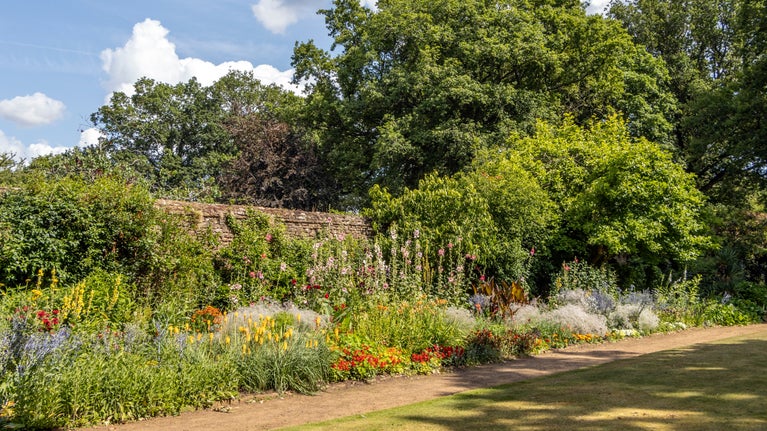
The part of the garden at Munstead Wood that is most famous now, is Jekyll’s hardy flower border. There is a very well-known painting by Helen Allingham, now in the collection of the Garden Museum in London, which shows this very scene in all its technicolour glory. There are a group of yuccas on either side of the gate to offer some structure and texture to this break in the long border, and these plants are still growing in the garden.
The colour scheme for the border began with cool colours at the edges, that blended towards hot colours in the centre, so as you walked along the border you could experience the changes in effect, and you could also step back and stop to admire the ‘garden picture’ at any point along the way. This is a complex planting scheme of drifts of herbaceous perennials, biennials, annuals, bulbs and tender plants with contrasting textures, foliage, and leaf shape to weave them together and extend the interest for many months.
At some point after Jekyll’s death, this Sunken Rock Garden was filled in and levelled to form a lawn. It was only in the 1990s, whilst the then Head Gardener was working in that part of the garden, that he discovered that the rocks, steps and paths were still in their original positions with soil and rubble infill. The area was excavated, and the planting restored. Bookmarked at either end by a large chestnut and a large oak tree, this garden, as its name suggests is set at a lower height than its neighbouring lawns and was similar in style to an area called the hidden garden, which no longer forms part of the estate.
Entry is down rough stone steps at either end, at the base of which the path is divided by an elongated island bed at the centre, encased by a low rock wall. It is a secluded and shady spot, with an abundance of rotating colour from early spring flowers such as fritillaries and Solomon’s Seal, to alpines, ferns and then delicate dwarf azaleas. The tree canopy here is much more dense than when it was originally planned, so not every plant thrives as originally intended.
The garden at Munstead Wood offers a carousel of feature areas in flower across the year.

Please consider making a donation today, to support our work at Gertrude Jekyll's Munstead Wood, where gardening changed for ever.
A brief overview of the fascinating life of Gertrude Jekyll and her journey to Munstead Wood and worldwide acclaim.
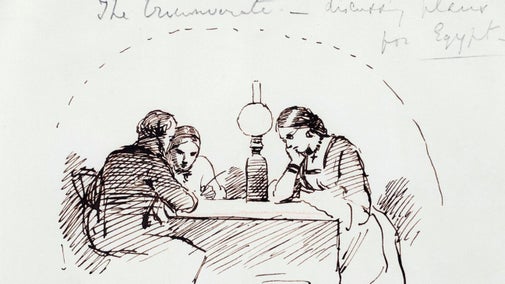
We share an insight to the house at Munstead Wood, which is a collaboration of creative design genius and pivotal to the careers of both Gertrude Jekyll and Edwin Lutyens.
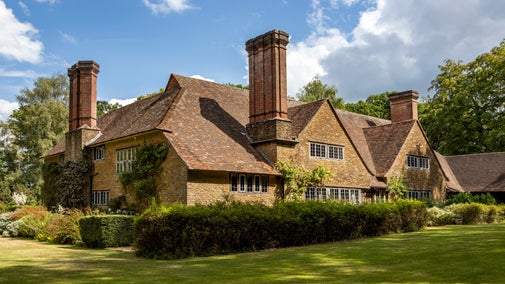
Understand more about the international significance of Munstead Wood to horticulture, architecture and the Arts and Crafts movement in Surrey.

Munstead Wood has been a private residence for over 75 years which hosted a handful of small garden tours each year. The house is a collaboration of creative genius which is key to the story of Surrey Arts and Crafts and the extraordinary careers of both Gertrude Jekyll and Edwin Lutyens. We are exploring how best to carve a future for this remarkable place, that safeguards its unique character, shares its powerful stories and enables others to see the beauty that lies beyond the garden wall. Find out what has happened in our first year here.

Learn about pioneering women gardeners from Edith, Lady Londonderry’s rare plants and symbolism, to Kitty Lloyd Jones, one of the first women to train as a professional horticulturalist.

Explore how changing tastes influenced the style of gardens over the centuries and discover where you can find the best examples from each period at the places we care for.

A garden lovers' home for all seasons, with an extensive yet intimate garden set around a romantic house and ruins.
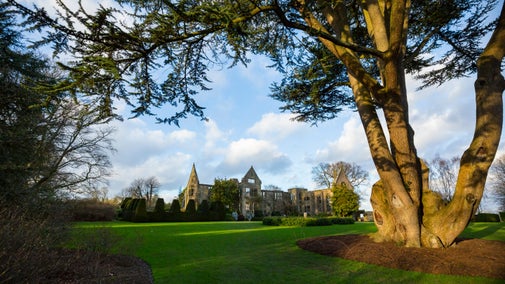
Elegant country house with highly distinctive gardens
